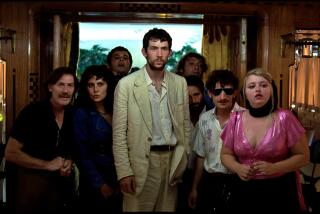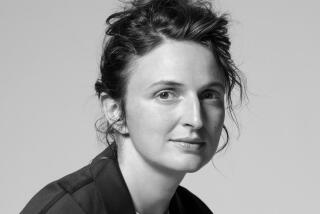Touring wineries in Chianti, Italy with an expert
At a London symposium one chilly night, there was talk of Italian wine and palm trees, warming our winter-weary souls.
Then I was handed a glass of pale rosé by an Italian woman who introduced herself as “Orsola with an O, because if I’d been a boy I would have been called Odoardo, after my famous great-grandfather Odoardo Beccari. This is my wine.”
I had never heard of Odoardo Beccari, an Italian 19th century botanist. But as I sipped the delicious Tulipa rosé, I was intrigued. And that led me on a trip of discovery to Chianti and Florence.
Orsola Beccari met me in Florence for the hour drive south to her family’s wine estate just outside the town of Radda in Chianti.
The Chiantigiana Road (SR222) took us south as it snaked through the beautiful hills between Florence and Siena.
It was the landscape I’d seen behind smiling Madonnas in many Renaissance paintings. I always thought it was imaginary: vines forming crisscross patchworks on the hillsides between bright yellow broom, wild white roses and scarlet poppies, with cypress trees marching alongside.
Here it was, intact 600 years later.
We drove past the Ugolino Golf Club, one of the oldest in Italy and as lovely as the countryside, and stopped for coffee in Greve’s charming piazza.
In the arcade was a butcher shop from 1806, Antica Macelleria Falorni. Its ceiling was dense with hanging hams and sausages, and taking a deep breath was like eating a plate of prosciutto.
As we drove deeper into Chianti’s golden heart, I saw wine estates everywhere, and Orsola knew all of them.
One, Vignamaggio, was in a beautiful villa — unusual because most estates are in castles.
At Badia a Coltibuono, the winemaker is a woman. Castello di Volpaia is lovely. Il Molino di Grace is owned by Americans.
Orsola said visitors can stop at any winery and usually find someone to give them a taste of wine and even sell them a bottle. Sometimes you can visit the castle, palazzo, monastery or even stay on the wine estate.
A family’s deep roots
Orsola’s great-grandfather Odoardo was born in 1843 and explored Borneo, where he discovered new varieties of palm trees. When he retired from his adventurer’s life in 1876, he started producing Chianti on his mother’s estate.
The Vignavecchia, or old vineyard, still owned by the family and run by Orsola, is just outside the thick walls of Radda in Chianti.
Orsola surprised even herself by stepping in for her father in 1990 when he became ill and later retired.
She had sold cashmere and gold on the Ponte Vecchio in Florence but loved her temporary job so much she is still running the estate 26 years later. Much of it has been transformed in that time.
As Orsola and I stood in front of old wine vats that trickled water into a rock pool, she told me that the family had sold the villa, which was Odoardo’s office and his wine cellars, along with the contents (but not the wine) because it had become too expensive to maintain.
It was bought by Giovanni Rossinelli, whose hospitality group has restored everything, turning the main buildings into a luxury hotel and the extensive wine cellars into a spa called Vignavecchia.
Her father’s desk has pride of place in the hotel reception area.
But growing wine grapes in fields her family has owned for 140 years remains unchanged and deeply personal. She had just planted 10,000 Sangiovese vines and named the new vineyard Lorenzo after her stepson, who had drowned.
She will have grapes in three years but won’t be allowed to make wine that can be certified as Chianti until the vines are at least 4 years old.
We walked through the growing vines as tractors plowed between alternate rows, leaving one row full of plants and flowers to stabilize and naturally fertilize the soil. Soon her vineyards will be 100% organic.
In the valley between her pretty fields is Le Vigne (the Vineyards), where you can sit outside under white umbrellas and lunch on ribolitta (Tuscan soup) or malfatti (ricotta gnocchi with spinach).
I finished my visit sitting on Orsola’s terrace and tasting her delicious wines as she told me of Odoardo’s legacy.
I was intrigued and decided to look further into his fascinating story.
Lasting legacy
In Florence, a city I know well, my search took me to places I had never been, including the natural history museum La Specola close to Pitti Palace.
La Specola opened in 1775 and is among the oldest science museums in the world. I found the room filled with birds that Odoardo had brought back from Borneo, including cassowaries, the strange, bright flightless creatures he discovered. (Orsola celebrates this with a picture of the bird’s distinctive head on her vin santo label.)
The garden at La Specola was peaceful and green, with the sounds of birds and water dripping into a Roman bath.
It has a secret entrance into the Boboli Gardens, but I wanted to get to my next Odoardo museum in the Palazzo Nonfinito — the “palace never finished,” a kind of joke about the façade. The building took so long to complete that tastes had changed; the lower level is in a heavily ornamental style, but the top two floors are classical.
I trudged up the long flight of stairs in this anthropology museum to the New Guinea room dedicated to Odoardo, where you can see his photograph, which Orsola reproduces on her Chianti Classico label.
The spears, statuettes, swords, blowpipes and even a canoe he collected were credited to him. His colleague, Capitano d’Albertis, was responsible for the grisly carved skulls.
The museum on this Saturday morning was deserted and a little spooky, but it was a luxury to be alone in a palace.
Fragrant and tranquil
The first time I tried to visit the Giardino dei Semplici (Garden of Simples) where some of Odoardo’s discoveries grow, it was closed. (Make sure you check opening times, always a good idea in Italy.)
The garden, founded by Cosimo I de’ Medici in 1545 and behind Piazza San Marco, is fragrant with the scent of roses and herbs and is a haven of tranquillity.
Odoardo discovered Amorphophallus Titanum Becc, one of the biggest flowers in the world, an impressive purple and gold bloom I had seen on the label of Orsola’s Titanum Chardonnay.
It was not in flower that day but, thanks to his great granddaughter, his winemaking legacy continues to flourish.
If you go
Vignavecchia, 53017 Radda in Chianti, Siena; 011-39-0577-738090, www.vignavecchia.com. Orsola Beccari offers her house for rent at www.lat.ms/orsolaairbnb.
More to Read
Sign up for The Wild
We’ll help you find the best places to hike, bike and run, as well as the perfect silent spots for meditation and yoga.
You may occasionally receive promotional content from the Los Angeles Times.







